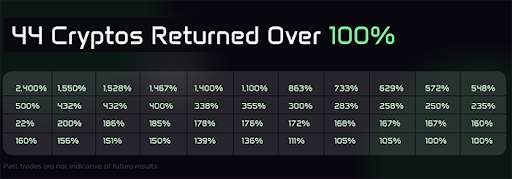TickerTalk Headlines for July 6th
In this newsletter:
Nasdaq vs. Dow Jones: A Detailed Breakdown of Stock Indexes
In this article, we compare the Nasdaq vs. Dow Jones, including their composition, market focus, calculation methods, performance, and risk. By examining these factors, investors can better understand how each index aligns with their investment goals and strategies.
What is the Nasdaq?
The National Association of Securities Dealers Automated Quotation, or the Nasdaq index, is the world’s first global electronic marketplace for trading securities and a top benchmark for U.S. technology stocks. When it was established in 1971 by the National Association of Securities Dealers (NASD), it provided traders with speed, transparency, and automation.
Today, the Nasdaq houses the world’s largest and most influential tech firms like Apple Inc. (NASDAQ: AAPL), Microsoft Corporation (NASDAQ: MSFT), Amazon.com, Inc. (NASDAQ: AMZN) and Alphabet, Inc. (NASDAQ: GOOG). These Nasdaq companies help make the index an indicator of tech sector health and market sentiment towards innovative and high-growth industries.
The Nasdaq operates several market tiers, providing a platform for both well-established corporations and emerging startups to access capital and grow.
- Nasdaq Global Select Market: largest and most established companies
- Nasdaq Global Market: mid-sized companies
- Nasdaq Capital Market: smaller companies with growth potential
What is the Dow Jones?
The Dow Jones Industrial Average (DJIA), commonly known as the Dow Jones or simply the Dow, is a well-respected stock market index that reflects the performance of prominent, publicly traded companies listed on U.S. stock exchanges. Established in 1896 by Charles Dow and Edward Jones, the Dow Jones index started as just a dozen industrial companies. Today, it has grown to include 30 U.S. businesses in technology, finance, healthcare, and consumer goods.
A committee of editors from The Wall Street Journal selects the companies that make up the Dow Jones typically based on their size, industry representation, and financial performance. Current Dow Jones companies include The Goldman Sachs Group, Inc. (NYSE: GS), Johnson & Johnson (NYSE: JNJ) and The Coca-Cola Company (NYSE: KO). Similar to the Nasdaq, the Dow serves as a barometer for the overall health of the U.S. stock market and economy, given its inclusion of multiple sectors and industries.
Key Differences Between Nasdaq and Dow Jones
Composition
The Nasdaq includes over 3,000 companies, primarily composed of technology firms, but also featuring businesses from other sectors such as consumer services, healthcare, and financials.
Dow Jones companies, on the other hand, are an elite group of 30 large, publicly-traded companies from a wide range of industries (excluding transportation and utilities).
Market Focus
The Nasdaq is known for representing the performance of innovative and fast-growing sectors, focusing on high-growth technology and internet-related companies.
A more traditional cross-section of the American economy, the Dow Jones encompasses various sectors such as finance, healthcare, industrials, and consumer goods, providing a broader perspective on established industry leaders.
Calculation Methods
The Nasdaq is a market capitalization-weighted index. This means that the weight of each stock is proportional to its market cap, so stocks with larger market values have more influence on the index.
The Dow is a price-weighted index. This means that the weight of each stock depends on its stock price, so companies with higher stock prices, regardless of their overall size, have a more substantial influence on the index.
Performance Comparison
The Nasdaq has often outperformed the Dow Jones due to its concentration in high-growth technology and internet-based companies. But while the Nasdaq has outpaced the Dow over long periods, it has also been more volatile. This divergence in performance highlights the Nasdaq's sensitivity to technological trends and innovation compared to the Dow's broader economic representation.
Historical Performance
Since its inception, the Nasdaq has experienced substantial growth, particularly during periods of technological advancement such as the late 1990s dot-com boom. And in the 2010s, tech titans like Google and Apple started soaring, sending the Nasdaq soaring as well. As of June 30, 2024, the Nasdaq Composite total return over the past five years was 126.35%.
Because The Dow represents a broader variety of industries, it has shown steadier and more consistent growth over the long term, reflecting the overall performance of the American economy. Major economic events, like the Great Depression, post-World War II booms and a series of bull markets have left marks on the Dow. As of June 30, 2024, the Dow Jones Industrial Average total return over the past five years was 45.30%.
Recent Performance
The Nasdaq has continued to outperform the Dow Jones, driven by the significant gains of major tech companies like Apple, Amazon, Microsoft, and Tesla (NASDAQ: TSLA). The COVID-19 pandemic accelerated this trend as technology companies benefited from increased digital adoption and remote work. In contrast, the Dow’s performance has been more moderate, reflecting the struggles of industries and sectors impacted by the pandemic.
As of June 30, 2024, the Nasdaq Composite total return over the past year was 29.33%. During that same time period, the Dow Jones Industrial Average total return was 13.66%.
Investment Considerations
When deciding between investing in the Nasdaq and the Dow Jones, you should consider various factors such as risk and volatility, return on investment (ROI), and suitability for different types of investors.
Risk and Volatility
Nasdaq risk is typically higher than Dow Jones risk. The Nasdaq's heavy weighting towards technology and growth stocks makes it more susceptible to market fluctuations and economic cycles. Tech stocks can experience significant price swings due to factors such as innovation cycles, regulatory changes, and market sentiment. On the flip side, the Dow’s diverse mix of established companies across various industries translates to lower volatility and more stable performance, providing a safer investment option during market downturns.
Return on Investment
Usually expressed as a percentage, ROI is calculated by dividing the net profit from the investment by the initial cost of the investment.
Nasdaq ROI has been historically higher than Dow Jones ROI. During periods of technological innovation and economic expansion, Nasdaq returns can significantly outperform the broader market. But this potential for higher returns comes with increased risk. Tech is fiercely competitive and products or services can become obsolete in a flash.
The Dow Jones tends to provide more consistent, moderate returns over the long term. This is due to its portfolio of established, blue-chip companies that pay steady dividends and provide capital appreciation.
Suitability for Investors
You are probably wondering which is the best index for investors. The short answer is: it depends. When deciding on a Nasdaq vs. Dow Jones investment, consider how much risk you are willing to take on and which index best aligns with your overall investment goals.
Do you have a higher risk tolerance, a longer investment horizon, and the ability to withstand short-term volatility? Are you looking to capitalize on technological advancements and growth opportunities? If so, the Nasdaq might be for you.
Are stability, lower volatility, and steady income important to you? Do you prefer a balanced portfolio that reflects the overall economy and dividend payments from well-established companies? If so, the Dow Jones may be more your speed.
Nasdaq vs. Dow Jones: Finding the Balance Between Risk and Return
When comparing the Nasdaq vs. Dow Jones, it’s important to remember that each index has pros and cons. The Nasdaq is known for its focus on technology and growth, offering significant potential for high returns but with higher volatility. The Dow Jones represents a broader array of sectors and industries, providing steady performance and lower risk.
Understanding the characteristics, risks, and benefits of each index will help you make a well-informed decision. Ultimately, the index you choose should align with your risk tolerance, investment goals, and time horizon.
Amazon coin set to soar 25X – starting July 22nd (Ad)
Chris Rowe – the man who recommended Amazon in 1998… Bitcoin and Ethereum in 2017…
And has spotted 44 different coins that have returned over 100%...
Today, he is now making the biggest crypto call of his ENTIRE career…
3 Sky High Stocks: Which Airline Takes the Lead?
The airline industry was once a symbol of soaring growth, but recently, it has been navigating a turbulent environment. Rising operating costs, economic uncertainty, and operational disruptions have created significant airline industry headwinds. The 2024 summer travel season presents a unique mix of potential opportunities, driven by pent-up demand and a rebound in international travel, alongside ongoing challenges such as labor shortages, inflationary pressures, and global economic uncertainty. Can airlines balance these factors to capitalize on increased travel demand while maintaining operational efficiency and managing costs?
Industry Dynamics: Cyclical Patterns and Recent Turbulence
The airline industry is inherently cyclical, and its fortunes are closely tied to the financial health of the global economy. Statistics reveal that during periods of economic expansion, travel demand soars, boosting airline revenues and profits. Conversely, economic downturns lead to decreased travel spending, impacting airline profitability. Several factors, including consumer confidence, fuel price volatility, seasonal travel patterns, and the unpredictable nature of geopolitical events, drive this cyclicality.
Currently, the industry faces multiple different headwinds. Rising costs, particularly fuel and labor expenses, are squeezing profit margins. Fueled by recessionary fears, economic uncertainty has dampened leisure and business travel demand. Operational challenges, ranging from staffing shortages to weather disruptions, further complicate the landscape. A strong US dollar also challenges airlines with significant international operations, making travel less appealing for foreign tourists.
However, despite these challenges, glimmers of hope have emerged. Oil prices show signs of stabilization, potentially easing cost pressures. Pent-up travel demand, accumulated during pandemic restrictions, could fuel a rebound in travel spending. Airlines also proactively implement cost-cutting measures and optimize their networks to enhance efficiency and profitability. The gradual recovery of international travel, spurred by easing travel restrictions, presents further growth opportunities for airlines with a global reach.
Delta Air Lines: A Global Contender Navigating Recovery
Delta Air Lines (NYSE: DAL), a primary international carrier with a robust domestic network, is well-positioned to benefit from a recovering global travel market. Delta's stock is trading around $47, with a market capitalization of $30 billion and a price-to-earnings (P/E) ratio of 6.09. This ratio indicates that investors will pay $6.09 for every $1 of Delta's earnings. This is considered a relatively low P/E ratio for the airline industry, potentially indicating that investors perceive Delta’s stock as a value with good earnings potential. Delta Air Lines analyst community has placed a consensus "Buy" rating on the stock, with an average price target of $60.30, representing a potential upside of 27.3%.
Delta's earnings report for the first quarter of 2024 revealed a strong recovery in revenue and profitability. The airline reported operating revenue of $12.6 billion, a 6% increase year-over-year, and operating income of $640 million, representing an operating margin of 5.1%. The airline's focus on business travel, which has been slower to recover than leisure travel, is starting to pay off, with managed corporate sales growing 14% year-over-year.
Delta is implementing a multifaceted strategy to navigate the current environment. The airline focuses on increasing ancillary revenue through baggage fees, seat upgrades, and onboard sales. Delta is also enhancing its SkyMiles loyalty program to retain customers and increase their lifetime value. The airline invests in technology to improve operational efficiency, personalize customer experiences, and streamline booking processes. Additionally, Delta is prioritizing sustainability initiatives to attract environmentally conscious consumers and reduce its carbon footprint.
Southwest Airlines: A Domestic Powerhouse Embracing Optimization
Southwest Airlines (NYSE: LUV), known for its low-cost model and robust domestic network, is poised to capitalize on the continued strength of domestic leisure travel. Southwest's stock is trading at around $28, with a market capitalization of $17.10 billion and a P/E ratio of 45.37, significantly higher than Delta’s. Southwest Airlines analyst community has a consensus "Hold" rating on the stock, with an average price target of $29.83, representing a potential upside of 4.7%. It is essential to acknowledge that, based on a high-end analyst forecast of $42, the upside potential could reach as high as 47%.
While Southwest’s earnings report recently revealed a net loss of $218 million in the first quarter of 2024, the airline saw a strong sequential improvement in unit revenue, driven by an acceleration in managed business revenues and benefits from network optimization efforts. These adjustments included capacity reductions in certain underperforming markets and closing operations at Bellingham International Airport, Cozumel International Airport, Houston's George Bush Intercontinental Airport, and Syracuse Hancock International Airport.
Southwest is focused on enhancing operational efficiency and controlling costs. The airline is limiting hiring and offering voluntary time-off programs and expects to end 2024 with approximately 2,000 fewer employees than in 2023. Southwest is also optimizing its network to improve profitability and implementing cost control initiatives to mitigate the impact of higher fuel prices and other cost pressures.
JetBlue Airways: A Niche Player Aiming for Efficiency
JetBlue Airways (NASDAQ: JBLU), a growing domestic airline with an expanding international presence, is focusing on improving operational efficiency and adjusting its network to enhance profitability. JetBlue's stock is trading at around $6, with a market capitalization of $2 billion. Analysts have a consensus "Reduce" rating on the stock, with an average price target of $5.75. This suggests a downside of 3.5% based on the average price target. However, JetBlue’s analyst community opinions vary significantly, with some analysts offering significantly higher price targets. For example, one analyst has a price target of $9.00, representing a potential upside of 56% from current levels. This wide range of opinions highlights the significant uncertainty surrounding JetBlue's financial performance.
JetBlue’s earnings report revealed a net loss of $145 million in the first quarter of 2024, attributed partly to elevated capacity in its Latin American region, which is experiencing significant competition. However, the airline saw encouraging performance from its domestic and transatlantic flying and continued strong demand for premium seating options.
JetBlue is implementing a rejuvenated standalone strategy designed to enhance reliability, optimize its network, and achieve cost efficiencies. Several notable network changes have been announced, including reduced Los Angeles International Airport flight operations. Additionally, the airline is reallocating flights to more lucrative opportunities in its core leisure markets and rationalizing its presence at seven stations. Moreover, JetBlue has implemented cost-saving initiatives, such as offering voluntary opt-out options for specific work groups, streamlining its real estate footprint, and continuing its fleet modernization program, which is projected to generate $100 million in cost savings by 2024.
Comparing the Contenders
Investors must consider a complicated landscape when assessing Delta, Southwest, and JetBlue. Delta, boasting strong revenue growth and profitability, attracts investors seeking stability. Its extensive international network and focus on business travel position it favorably against recovery signs in these sectors. However, higher operating costs compared to peers pose a risk should fuel prices spike.
Despite a recent net loss, Southwest offers a compelling low-cost model with a robust domestic network. Its impressive revenue growth, driven by leisure travel and network optimization, suggests a potential for swift profitability. The airline's conservative financial approach with low debt further mitigates risk. However, its limited international presence and dependence on the cyclical leisure travel market may make it vulnerable to economic fluctuations.
JetBlue's current environment necessitates a cautious approach. Declining revenue and negative operating margins highlight competitive pressure, particularly in the Latin American region. While JetBlue is implementing cost-saving measures and network adjustments, its smaller scale and analysts' "Reduce" rating indicates a higher risk profile. Investors must closely monitor its progress towards sustainable profitability.
Ultimately, the ideal choice depends on individual investor risk tolerance and goals. Delta offers stability and growth potential for those seeking a diversified airline with global exposure. Southwest presents an opportunity for those attracted to its low-cost model and a potential surge in domestic leisure travel. JetBlue, though riskier, may appeal to investors seeking a potential turnaround story and willing to accept a longer-term outlook.
"The Biggest Drug Ever" Is Coming (Ad)
UBS bank predicts it will become "The Biggest Drug Ever."
The Wall Street Journal believes it will be "Pharma's biggest blockbuster yet."
Bank of America predicts it will be the world's first "$100 billion dollar a year drug."
And Morgan Stanley predicts 250 million prescriptions will be written each year.
Top 3 Retail Stocks Defying the Earnings Trend: AEO, PLAY, ROST
One of the most closely watched economic indicators is the monthly report on retail sales. In June 2024, the May numbers were reported. After being negative in April, retail sales were up 1.2% month-over-month and 2.88% year-over-year.
So why didn't you hear the sound of champagne corks popping? There's more to the story. While encouraging, those numbers are not adjusted for inflation, which still runs at around 3.3%.
That means actual retail sales were negative not only in May but every month for the last year. The takeaway is that consumers are closing their wallets for discretionary purchases. And that's what you're hearing from retailers issuing weak guidance for the stocks of these companies, which continue to lag in the market.
While you might think this is only a problem for low—to middle-income consumers, you would be wrong. Even premium brands like Lululemon Athletica Inc. (NASDAQ: LULU) are lowering their forecasts due to unexpected weakness.
But there are winners to be found in any market, and that's the case with these three retail stocks, which are currently beating earnings estimates and continuing to issue bullish forecasts.
AEO: This High-Flying Mid-Cap Stock is Ready to Move Higher
American Eagle Outfitters Inc. (NYSE: AEO) is a specialty retailer that houses its signature American Eagle brand and Aerie, offering intimate and lifestyle apparel lines. At a time when many retailers are struggling to post increased same-store sales, American Eagle is holding its own. In the company's first quarter, Aerie's same-store sales were up 7% year-over-year, and American Eagle retail stores posted an 8% year-over-year gain.
Despite the positive numbers, AEO stock is down over 10% since the report. However, with AEO stock up 58% in the last 12 months, this looks like a healthy pullback that could set the stage for another higher move.
One key to making that happen will be to see if the company can maintain its margins on Aerie, which tends to carry a higher price. The American Eagle analyst forecasts on MarketBeat give AEO stock a consensus Hold rating but with a price target of $25, a 29.5% upside from the stock's closing price on July 3, 2024.
Investors Have an Opportunity to Buy an Unappreciated PLAY Stock
In many cases, investors sell the news regarding earnings reports. It can be seen as better to sell first and reconsider later. That appears to be the situation with Dave & Buster's Entertainment Inc. (NASDAQ: PLAY). The headline numbers on the company's earnings report were bad. And PLAY stock is down over 20% since the report. However, as Thomas Hughes wrote for MarketBeat, Dave & Buster's Entertainment is in the middle of executing a growth strategy that involves opening new stores and expanding internationally.
However, to be fair, this wasn't the first quarter that Dave & Buster's missed analyst expectations on the top and bottom lines. It was actually about the fifth quarter in a row that the company missed expectations.
This is where the opportunity lies. Revenue and earnings are lower year-over-year but still well above five-year levels. But the PLAY stock price is about where it was five years ago. That suggests that investors have oversold the stock. That's what the analysts believe. They have a Moderate Buy rating on the stock with a $65.71 price target, a gain of over 70%.
ROST: Will the Third Time be the Charm for This Retailer's Stock?
As inflation continues to impact consumers, many investors are taking the temperature of discount retailers like Dollar General Co. (NYSE: DG). They may be better served looking at a company like Ross Stores Inc. (NASDAQ: ROST).
For starters, the company has a loyal customer base that seeks out the company as a place where they can "Dress For Less," which means they can get name-brand merchandise at deep discounts. That's reflected in revenue and earnings that are up year-over-year and continue to beat analysts' expectations.
Just as consumers like to buy items on sale, investors love a stock that shows expanding margins and rising cash flow. Although ROST stock has been up 29.5% over the last 12 months, resistance has been found to be right around the $150 stock price on two different occasions.
If the company can continue to beat earnings estimates as the Federal Reserve begins to make monetary policy more accommodating, the third time may be the charm for ROST stock.
Will Biden Be Replaced? (Ad)
There are growing rumors of a possible Joe Biden replacement following his first debate against Donald Trump.
However, I don't think that's what will actually happen...
Because there's a sneaky, yet 100% legal way for Biden to still win the election – without ever having to replace him on the ballot.






没有评论:
发表评论